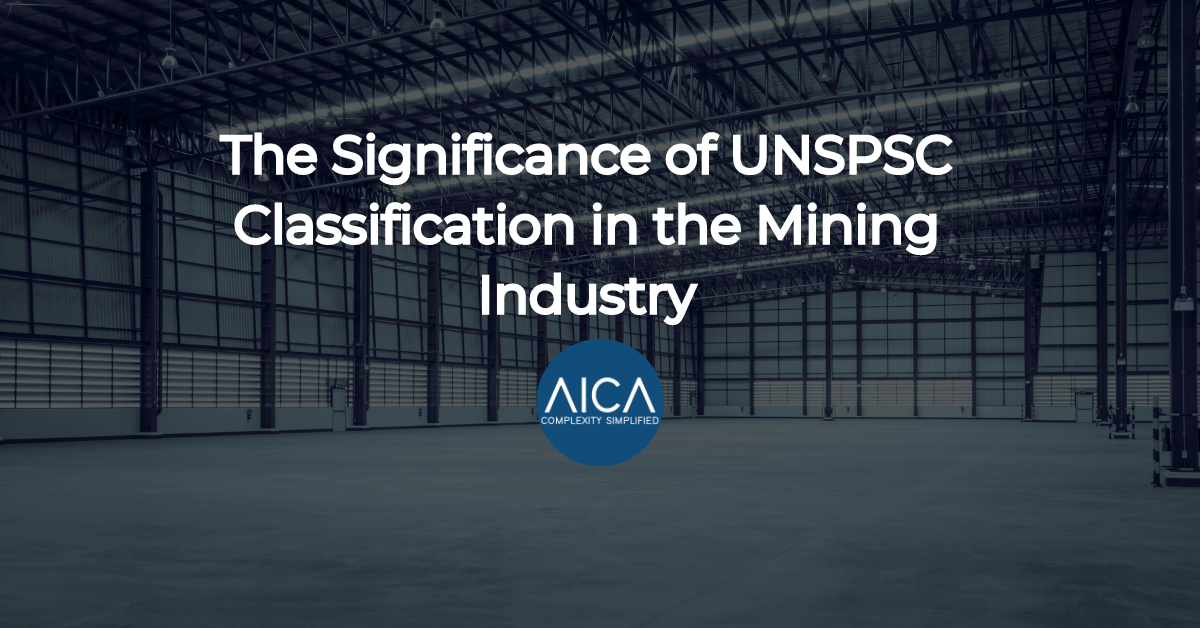Mining is more than just extracting minerals; it’s about managing resources, understanding processes and ensuring efficiency at all levels. In such a vast and complex industry, how does one maintain uniformity and clarity in product data? Enter the UNSPSC classification.
This article will help you understand its essence, the ROI behind its implementation and AICAs ability to classify your data in seconds.
What is UNSPSC?
The United Nations Standard Products and Services Code (UNSPSC) is a global taxonomy of products and services. This open, hierarchical classification system offers a standardised framework to classify products and services.
In the mining industry, it ensures that commodities, equipment and services are categorised systematically, providing a universal approach to procurement, inventory management and other essential functions.
The Importance of UNSPSC in the Mining Sector
Mining enterprises stretch across continents, making the uniform understanding of products and services crucial. UNSPSC aids in:
– Streamlining procurement processes.
– Reducing discrepancies in product descriptions.
– Enhancing analytics and reporting by offering standardised data.
– Facilitating global trade and compliance.
The ROI of Classified Product Data
Justifying investment decisions can be a labyrinthine process, especially when direct impacts aren’t easily discernible. Let’s dive into the perspective of ROI within Category Management, as it holds parallels to the UNSPSC classification:
a. Financial Perspective on ROI
ROI isn’t just about numbers; it’s about understanding the value brought into an organisation. For procurement, especially within the mining sector, it’s about discerning this value amidst complex operations and multiple stakeholders.
b. The Three Dimensions of Value
Organisations often measure value across three dimensions:
– Cost Savings: Category Management can yield an average saving opportunity of 7-8% on previously unmanaged spend.
– Efficiency Improvements: By categorising products effectively, managers can free up resources, leading to productivity gains. This translates to tangible savings for organisations.
– Non-Tangible Benefits: These encompass a wide array of advantages, from fostering organisational resilience, achieving ESG goals, to staff satisfaction.
c. Demonstrating a Positive ROI
By considering all these dimensions, mining companies can gain a holistic perspective on the impact of UNSPSC classifications, and eventually demonstrate a positive ROI.
The Power of AICAs AI in Data Categorisation
Manual categorisation is a long and tedious task. For example, take a mine with a dataset of 50,000 items. Using traditional methods and assuming it takes 30 seconds for a manual categorisation of each item, two employees would collectively spend approximately 26 days to complete this task.
This doesn’t only represent time but also cost. At an hourly rate of $25, the mine would incur an expense of around $20,833.50 just for this categorization process.
The strength of our ML algorithms shines through here, capable of categorising this dataset in mere seconds and at a substantially reduced cost.
For the mining industry, our algorithms unparalleled benefits include:
– Efficient Categorisation: AI can rapidly and accurately classify vast product data sets into relevant UNSPSC codes.
– Continuous Learning: Unlike static systems, our algorithm learns from new data, constantly improving its categorisation accuracy.
– Data Insights: Our algorithms can provide insights into other issues within your dataset such as duplicates, spelling and non-standardised data, helping you organisation make informed decisions.
Conclusion
In an industry where efficiency and precision drive profitability, it’s essential to embrace advanced tools and technologies. Not only do we offer rapid data categorisation, but we do it at a fraction of the traditional costs.
We invite you to discover the transformative power of AICA firsthand.

